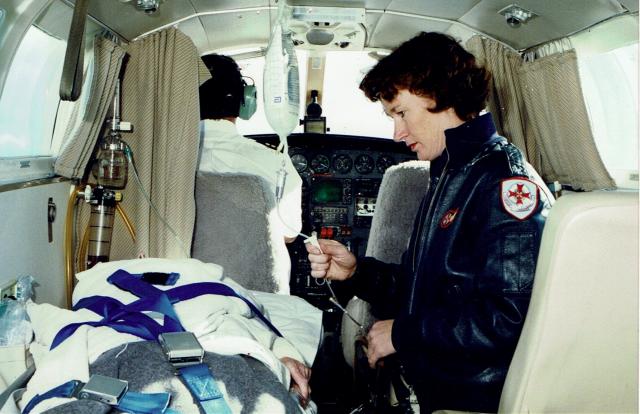Air Ambulance Victoria (AAV) celebrated 60 years of world-class pre-hospital care on Monday May 2.
The AAV wing of Ambulance Victoria (AV) was set up in 1962 and included one rotary wing aircraft and one fixed-wing plane.
Twelve patients were transported in the first year, the majority being medical and trauma patients from the Snowy Mountain Hydro Scheme.
Sixty years on and AAV’s fleet of four fixed-wing planes and five helicopters (HEMS) provide a vital link between rural communities and metropolitan health services.
Fixed-wing aircrafts – typically staffed by Advanced Life Support (ALS) flight paramedics – and HEMS – staffed by Mobile Intensive Care Ambulance (MICA) flight paramedics – reach across Victoria and into parts of southern New South Wales, northern Tasmania and South Australia.
The service is made up of just over 37 ALS flight paramedics and almost 50 MICA flight paramedics supported by a dedicated team of flight co-ordinators, pilots, aircrew officers, doctors, engineers, trade assistants, retrieval services and administrators.
In 2020/2021, AAV responded to more than 7,000 incidents – up almost 1,000 on the previous year, with the fixed-wing fleet transporting more than 5,000 patients.
AV’s Manager of Air Operations Anthony de Wit said AAV is at the forefront of pre-hospital patient care in Australia and worldwide.
“While it’s difficult to confirm the number of lives saved since 1962, over the past decade AAV has assisted more than 50,000 people throughout Victoria and our bordering communities,” he said.
“Our fixed-wing arm is the backbone of AAV and it cares for so many patients per year, really helping to connect regional and rural Victoria with the health services that metropolitan Melbourne has to offer.”
Over the last year, the fixed-wing planes averaged approximately 250 missions each month and clocked up about 430 flying hours (per month), equating to eight to 10 flights per day.
The fixed-wing service transports people from regional and rural areas for treatments such as chemotherapy and radiotherapy.
Frequent flyer 71-year-old Judith Harper said without AAV she wouldn’t be here today. Judith underwent brain surgery in 2018, followed by radiotherapy.
“I always feel so safe and well-looked after on the fixed-wing planes who fly me monthly for my chemotherapy sessions from Warrnambool to Melbourne – the paramedics are incredibly kind, and their clinical expertise doesn’t go unnoticed,’ she said.
The fixed-wing planes also fly patients with acute medical conditions requiring surgery, transfer injured patients from regional hospitals and retrieve critically ill patients from regional hospitals to specialist care, such as cardiac care and intensive care.
AV recently announced the fixed-wing fleet was undergoing a major upgrade to become one of the most innovative in the country.
AAV’s five emergency response helicopters (HEMS) are based at Essendon, the Latrobe Valley, Bendigo and Warrnambool and are called out for life-threatening emergencies, which are mainly trauma and paediatric cases, as well as a small amount of search and rescue, and transporting remote patients.
Anthony said AAV provides a world-class service using state-of-the-art aircrafts flown by highly trained professional pilots and aircrew.
“At AAV, the performance and the standard we demand of our staff is of the highest quality, and we continually strive to improve our clinical care and upgrade our facilities – it’s been a privilege to manage Air Ambulance Victoria,” Anthony said.
“We walk in the shadow of those over the last 60 years and people all over the world use us as a model. That’s something to be celebrated.”
Troy Fosbender, the longest serving current flight paramedic, has been helping transport time-critical patients and non-emergency patients from regional cities such as Horsham, Shepparton, Warrnambool and Mildura to Melbourne for just over 27 years.
The veteran paramedic has also worked in the flight co-ordination centre and has notched up more than 10,000 flights since his first take off in November 1994.
“The technology has improved at AAV, with more capable equipment that is much more compact and lighter than the older gear,” he said.
“The stretchers, for example, have been engineered to ensure they can be adjusted quickly so they can be transferred from the aircraft into a road ambulance without having to move very sick patients from bed-to-bed.”







